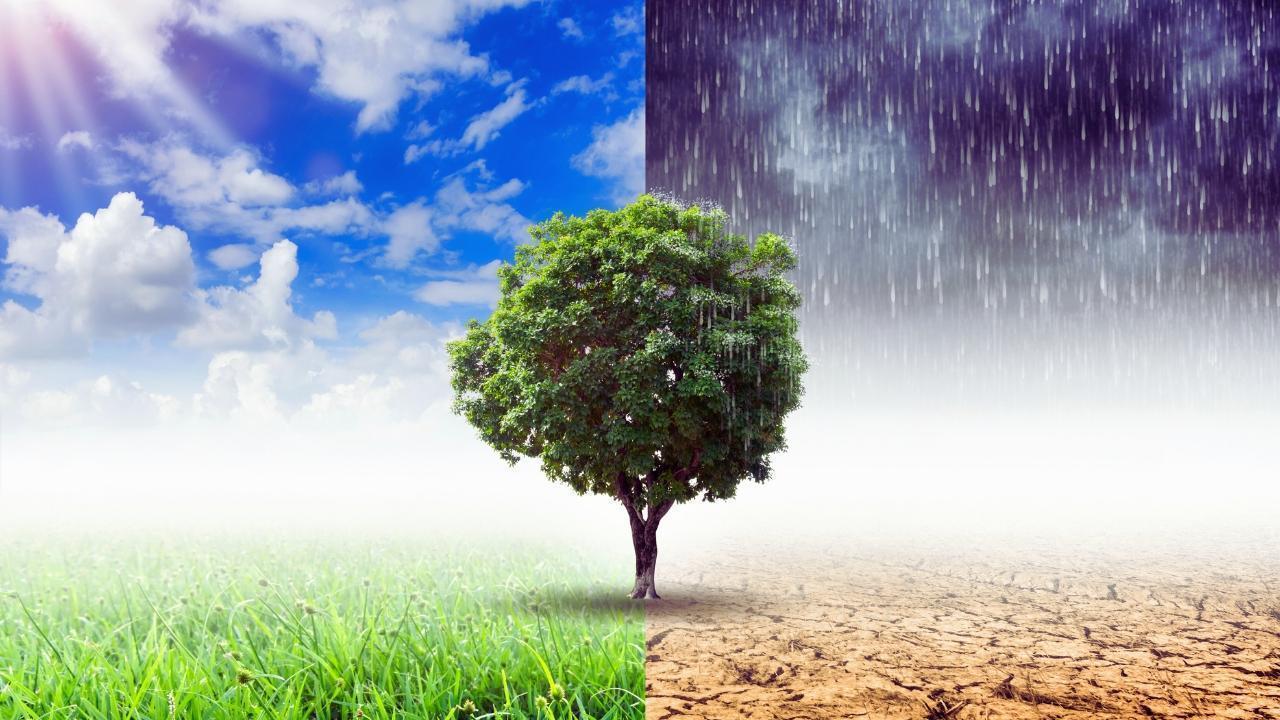You have not yet added any article to your bookmarks!

Join 10k+ people to get notified about new posts, news and tips.
Do not worry we don't spam!

Post by : Anis Farhan
In 2025, climate science is no longer confined to elite institutions, paywalled journals, or government agencies. It is collaborative, transparent, and accessible, thanks to the accelerating rise of open science. The idea is simple but powerful: make research data, methods, and findings freely available to anyone who wants to study, replicate, or build on them.
This open model is especially crucial in climate science, where timely data sharing can mean the difference between proactive adaptation and reactive disaster response. As wildfires rage, seas rise, and crops fail more frequently across the globe, scientists, governments, and communities need real-time, reliable insights to act swiftly.
By embracing open-source tools, shared datasets, and collaborative platforms, the climate research community in 2025 is not just expanding its reach—it’s democratizing climate knowledge for the good of all.
Traditional research models have long been criticized for being slow, siloed, and inaccessible. Publishing in high-impact journals often takes months or even years. Climate models and raw data—especially those derived from satellites, sensors, and simulations—were frequently locked behind institutional walls.
But the urgency of climate change demands a new paradigm. Open science offers several key advantages:
Speed: Datasets and findings can be shared in real-time, helping frontline responders and policymakers act faster.
Collaboration: Scientists across borders and disciplines can work together more effectively.
Equity: Researchers in low-resource settings can access tools and data they might otherwise never afford.
Transparency: Open methods allow public scrutiny and build trust in findings.
In 2025, these advantages are no longer theoretical—they are playing out on the ground, from Arctic climate observatories to coastal monitoring stations in Southeast Asia.
One of the biggest breakthroughs in recent years has been the release of large-scale, publicly accessible climate datasets. Organizations like NASA, ESA, NOAA, and the Indian Space Research Organisation (ISRO) now publish real-time atmospheric, oceanic, and land data via open APIs.
These datasets fuel everything from rainfall prediction in rural Kenya to glacier melt analysis in the Himalayas. In 2025, platforms like Google Earth Engine, Copernicus Climate Data Store, and Open Climate Data Hub are being used by high school students, climate activists, startups, and national meteorological agencies alike.
In Asia, the Asian Open Climate Data Initiative—a partnership among ASEAN nations—has launched a multilingual portal where researchers and farmers alike can track crop health, heatwaves, and water availability.
It’s not just data that’s being shared—climate models themselves are becoming open-source. One major example is CMIP7, the global climate modeling initiative coordinated by the World Climate Research Programme. In 2025, its next-generation models are being developed on GitHub, with contributions from over 60 countries.
These open models allow users to run custom climate projections—down to the district level—without needing supercomputers. Tools like ClimateBench and Xarray make it possible to simulate sea-level rise in Pacific islands, forecast monsoons in India, or predict wildfire risk in Australia—all on a laptop.
Open-source climate models are also enabling non-scientists to get involved. NGOs and journalists can now visualize local climate impacts using accessible dashboards. This level of transparency is helping turn abstract threats into tangible, local realities—driving stronger public support for climate action.
In 2025, climate research is increasingly participatory. Citizens around the world are contributing to science using low-cost sensors, smartphone apps, and online portals.
Projects like:
GLOBE Observer (NASA) allow users to report cloud patterns and land cover.
CoASTS (India) helps fishers monitor sea temperature and pollution.
AirVisual (Vietnam) engages urban residents in tracking local air quality.
These initiatives are not just outreach—they’re generating valuable, high-resolution data that supplements satellite and institutional datasets. In rural and remote regions, citizen science is often the only way to get timely, ground-truth data.
Moreover, such initiatives build community trust and scientific literacy, ensuring that climate action is rooted in local knowledge and participation.
Open science is no longer just a research philosophy—it’s becoming a policy enabler. In 2025:
Cities are using open heatwave models to design green infrastructure.
Water resource managers in Southeast Asia are using shared hydrology models to prevent conflict.
Climate litigation efforts use open datasets to hold polluters accountable.
Open science tools are also making their way into national climate strategies, allowing governments to model emissions pathways and adaptation plans transparently. This has strengthened international climate negotiations, as countries can now align plans on the basis of shared evidence.
Despite the momentum, open climate science faces challenges:
Data quality: Open does not always mean accurate. Poorly annotated or outdated datasets can mislead.
Digital divide: Not all communities have equal access to the internet, software, or computing power.
Funding gaps: Maintaining open infrastructure requires sustained investment, which many universities and governments struggle to provide.
Misuse risk: Open tools can be misinterpreted or weaponized by climate skeptics, disinformation campaigns, or poorly informed media.
To succeed, open science must be backed by training, governance, and global cooperation.
What makes open climate science powerful is its potential to bridge divides—between North and South, experts and citizens, academia and policy. It reflects a shift from "science for the few" to "science for all", and from private knowledge to shared responsibility.
In 2025, this shift is helping climate research move faster, adapt better, and speak louder—giving communities, governments, and industries the tools they need to make evidence-based decisions in a changing world.
If the climate crisis is the defining challenge of our time, then open science may be its most hopeful ally.
This article is for informational purposes only. It does not constitute scientific, legal, or environmental policy advice. For guidance on data use or climate modeling, please consult recognized academic or governmental sources.










Akshaye Khanna exits Drishyam 3; Jaideep Ahlawat steps in fast
Producer confirms Jaideep Ahlawat replaces Akshaye Khanna in Drishyam 3 after actor’s sudden exit ov

Kapil Sharma’s Kis Kisko Pyaar Karoon 2 to Re-release in January 2026
After limited screens affected its run, Kapil Sharma’s comedy film Kis Kisko Pyaar Karoon 2 will ret

Hrithik Roshan and Saba Azad Celebrate Christmas at Family Party
Hrithik Roshan and Saba Azad celebrated Christmas at Sussanne Khan’s party, sharing happy moments wi

China Sanctions 20 US Defense Firms Over Taiwan Arms Sales Dispute
China imposes sanctions on 20 US defense companies and 10 executives for supplying arms to Taiwan, e

Salman Khan’s Grand 60th Birthday Bash at Panvel Farmhouse Shines Bright
Salman Khan celebrates his 60th birthday with a grand party at Panvel farmhouse, sharing joyful mome

Thailand Defence Minister Joins Talks to End Deadly Border Clash
Thailand’s defence chief will join talks with Cambodia as border clashes stretch into a third week,